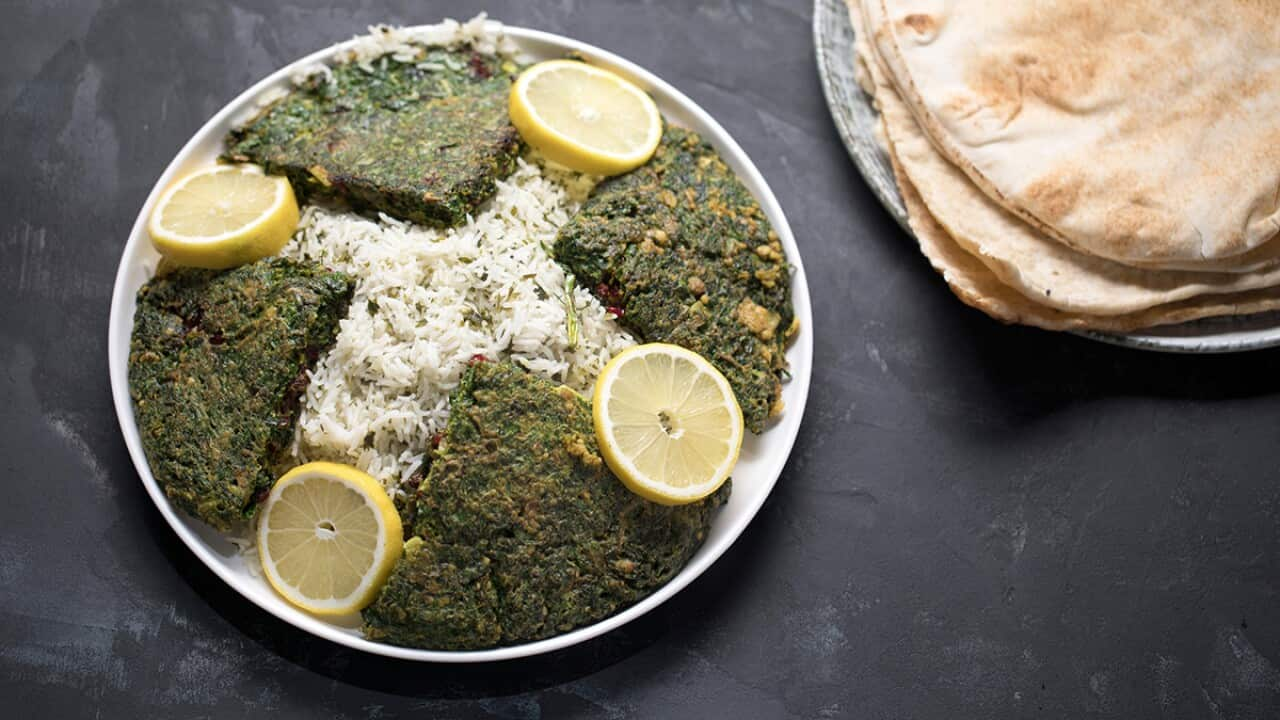There is no shortage of kuku sabzi on the table in Iranian households during Persian New Year, known as Nowruz. Translating to 'new day', this celebration marks the beginning of the new year in Iran and coincides with the start of spring there. This year, Nowruz falls on Thursday 20 March.
Iranian chef explains that on the first night of festivities, "almost everyone, all over the country, has rice mixed with well-chopped herbs, fried fish and kuku sabzi."
Kuku refers to a group of Persian food made with eggs that is symbolic of fertility.
"There is a big variety of kuku in Persian food recipes like potato kuku, green beans kuku or carrot kuku but among them, kuku sabzi is the most common with a longer reputation that [dates back] thousands of years," she explains.
Kuku sabzi's green colour is a product of its second hero ingredient, sabzi, meaning herbs and symbolising rebirth. Wild, edible herbs have grown abundantly in Iran for centuries. Mixing them with eggs makes a dish for everyone.
"Everyone from all social statuses could afford to have it," Babzartabi explains. "People with good income could eat their New Years' dinner with fish and others had kuku sabzi instead."
TRY MAHSHID BABZARBATI'S RECIPE

Kuku sabzi
The festive dish is loved across the country for its fragrant, herby aroma and ease of preparation. In her recipe, Babzartabi uses parsley, coriander, dill, spring onions, chives and fresh garlic leaves. She stirs these same herbs through rice to make an accompaniment.
"In some states, they add extra flavour like well-chopped lettuce, which makes kuku sabzi fluffier and tender," she says. "Some also add well-chopped basil, which makes the flavour stronger, and almost everyone adds barberries and crushed walnuts to give a crunch and soured taste."
If you are cooking kuku sabzi for the first time, Babzartabi advises keeping the heat on low so that the omelette doesn't burn. She laughs at memories of burning the dish on one of her first attempts at making it since she had turned the heat up too high.
"It needs a good amount of oil to fry both sides, but it's also possible to just spray the pan with oil and leave it in the oven," Babzartabi says. "When one side is done, you can take it out and again, spray the pan with oil and flip it over for the other side to fry."
A celebration of new life, an energy booster and a way to use herbs before they wilt; kuku sabzi ticks all the boxes.




